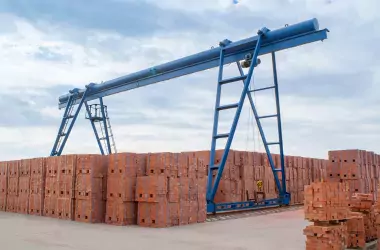Dry process SOx removal
Belgium

The challenge
A brick factory in Belgium faced an emissions problem with regards to SO2, SO3 and to a lesser extent HCl and HF.
Earlier regulations had set two different levels of SOx emissions, depending on the sulfur level in the clay: 500 mg/Nm3 (below 0.12%) or 1,500 mg/Nm3 (above 0.12%).
But a new standard set a single level of 500mg/Nm3 in all cases. The factory was equipped with a fixed bed reactor installation.
For several reasons it was not able to meet the new regulatory levels. The customer wanted a complete solution that would meet current and future standards.
The Lhoist solution
Lhoist set up an on-site test program that ran for three months. It had two aims:
- show it was possible to meet current and future standards by using a dry injection of Sorbacal® before the fabric filters
- determine the most effective Sorbacal® sorbent for this application.
We designed and built a pilot gas treatment unit with a capacity of 5,000 m3 /h, consisting of a reactor and a fabric filter. We also provided a Big Bag Injecto-Matic unit, and a mobile laboratory to measure emissions during the tests.
Testing a variety of products
Six products were tested:
- Sorbacal® SP
- Sorbacal® A
- Sorbacal® H90
- Sorbacal® H63 (hydrated lime) 0-90 μm
- Sorbacal® H63 (hydrated lime) 0-63 μm
- Milled limestone 0-90 μm
- Milled limestone 0-74 μm
Lhoist R&D teams investigated over 30 different configurations of temperature, reaction time and sorbent dosage. More than 100 gas and residue analyses were conducted.

The benefits
The customer’s issue was resolved in three months. And less than six months after beginning the project a new treatment installation was built and successfully commissioned.
The required level of desulfurization was achieved using a dry injection of Sorbacal SP. It was by far the best of the sorbents tested, with up to five times less consumption. In addition, we demonstrated that recirculating the residues can improve overall performance by up to 20%.
Diagram of the test unit
